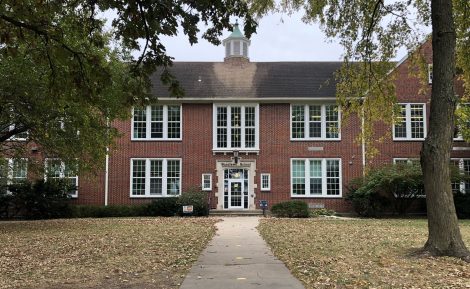Enrollment increase, money management have enabled school budget reversal
Earlier this week, the Lawrence school board reversed years of budget cutting and approved nearly $2 million worth of new programs.
The board expanded the district’s full-day kindergarten to four more schools, added 21 new teachers to the district and agreed to fund a program geared toward getting more middle-of-the road students and first-generation college students into universities.
It was a move that left some people scratching their heads wondering where the money came from. The short answer is that the district has seen an increase in enrollment, which means a significant boost in funding. And, during the past couple of years, the district has built up a cash reserve from state dollars that is targeted for at-risk programs.
On top of that, the district’s chief operations officer, Kyle Hayden, said that in the face of a bleak funding outlook, the district ended up cutting more than was needed. He noted that was a better option than running out of money.
“Playing the conservative approach for the short term is paying off now,” he said. “It has allowed us to make some decisions to reverse those cuts.”
For a more detailed explanation, here are some numbers that will help piece together the different pots of money the district will pull from to fund these programs.
$1.15 million
The anticipated cost for the district to hire 21 new teachers, which will lower class sizes by one student in elementary and middle schools.
$92,000
The cost of hiring a division director of instruction, a position that had been cut.
$600,000
Additional funding the school district received for the 2011-2012 school year because of increased enrollment. The district thinks it will receive a similar amount next year.
0.8 percent
The amount district enrollment is expected to increase by next school year, bringing in about $400,000.
$1 million
A rough estimate of the additional money the school will receive next year because of two consecutive years of enrollment increases. This money will be used to cover the cost of additional teachers and staff.
$800,000
The amount of “unbudgeted funds” expected at the end of the school year. Some of it will be used to cover the cost of hiring more teachers.
$5.5 million
The amount of money the district received from the state’s at-risk funding. This funding is based on the percentage of students who receive free and reduced lunches and can only be spent on certain programs.
$527,341
Cost of expanding the district’s full-day kindergarten program to Sunset Hill, Deerfield, Quail Run and Langston Hughes. The expense will be covered through the district’s at-risk dollars.
$4.8 million
The amount of money the district spent in at-risk dollars, leaving about $700,000 unused. Of that amount, about $500,000 will go toward covering full-day kindergarten. The district anticipates receiving and spending similar amounts of at-risk dollars in future years, which would make the kindergarten program sustainable.
$3.8 million
How much money that’s expected to remain in the district’s contingency reserve, which is around 6 percent of the district’s entire general fund budget, at the end of the school year.







